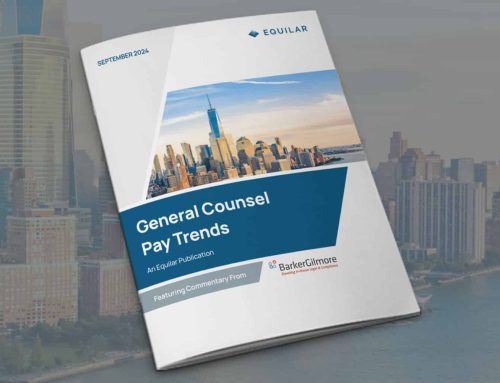In a more intense regulatory environment, the GC role has taken center stage.
While succession planning has become de rigueur for CEOs, increasingly, leading companies are planning succession in broader, deeper terms for key management positions they cannot risk having unoccupied, even for brief periods. Given the increased and more central responsibilities of the general counsel (GC), that role is now on a short list of senior positions for which there must, at all times, be a capable successor.
Succession planning for GCs may entail anything from a planned succession, such as retirement, over the course of a couple of years, to an emergency succession, where the general counsel is unable to meet his or her responsibilities because of a quick, unplanned departure.
Changing times, changing role
In less challenging economic times, the GC managed the company’s legal department, was a key resource to the CEO and the board, and managed outside counsel. Now, with companies more budget-conscious than ever before, there is often not the luxury of relying on outside counsel. Doing more with less means requiring much more of the GC and his or her staff, and their legal skills must be at least on a par with anyone the company would previously have retained on the outside.
In a more intense regulatory environment, the GC role has taken center stage, making it ever more critical to identify the most suitable person for this sensitive leadership function which will have a significant impact on the value of the company. GCs are no longer viewed primarily in terms of their legal or policing abilities, but are now prized as strategic thought partners. GCs are often now brought in at the very inception of a deal…while it is still only a gleam in the CEO’s eye…rather than jumping in during the due diligence phase.
Given these new, higher-stakes challenges, many companies are ratcheting up the profile and specs for the person required for the GC role. As a key partner to the senior management team… consulted on everything from potential acquisitions to taking the lead in resolving regulatory concerns… GCs must have far more than topnotch legal credentials. Add to the list of must-haves for the role strategist and counselor, someone who understands the bigger picture… in terms of the company, the industry, and the global economy… as well as all the legal implications. He or she must be viewed by the CEO and others around the boardroom table as a peer with vital specialized knowledge and skills that they can rely on.
Greater succession planning urgency
As we observe many companies raising the bar for what is required in the GC role, there is no question that the top candidates are in great demand, which in turn is raising the bar on compensation. With competition for the best, and offers from other companies sometimes too good to refuse, there is also greater mobility among those in these roles, and it is increasingly common for talent to be wooed away.
Retirement is also a factor in greater turnover, and will continue to be for some time, as a large number of baby boomers exit from these roles that may have been stable for many years. And some GCs decide to move from their legal specialty over to the business side.
Combine these factors creating the need for successors in the GC role with the elevated prominence and central importance of the role itself, and it is easy to understand why companies are less comfortable leaving succession to chance or making any assumptions about how long incumbents will remain in the role.
Taking control of the reins and proactively planning for succession is especially critical in large public companies, where share price can be highly sensitive to unpleasant surprises, such as losing a key member of the executive team. This can be particularly true in the case of the GC, where specialized knowledge often makes it difficult, perhaps even impossible, for a successor to immediately jump in. This is clearly a case where implementing best practices provides more than an ounce of prevention and security.
7 steps to GC succession success
We recommend that companies implement a systematic, reliable succession process so that when a GC successor is needed, there is little time wasted on scrambling and trying to decide what to do and in what order. The following steps comprise a thorough process, when it is time to consider a successor for the GC, or any other key management role:
Create a long “runway”
Think you’ve got plenty of time? Think again. Done right the succession process can take a year or more from start to finish. Increasingly, we find the best companies think of succession for a specific role in terms of a broader management development process, which has no end. The strategy determines the skills and competencies required in the senior team, so they are always looking ahead at what is shifting and what is needed.
Ensure broad-based input & support
Tap key stakeholders for their views on the GC role to get a well-rounded picture of what will be required in a spec. In addition to gathering data, engaging senior players so that they are part of the process is critical to a successful outcome. The CEO can provide insights on the strategic direction of the company, which will help to inform the sort of candidate who will be a good match, while those on the board will provide a different perspective on the value of the new GC to the long-term direction of the organization. The executive team can provide an historical view of the contribution of the role, as well as what additional competencies would be helpful. Depending on the circumstances… voluntary or forced departure… the input of the outgoing GC on the responsibilities, skills, and competencies required in the role is also important in this initial phase.
Spell out the who, when, & how of process
Who will comprise the selection committee? Typically that includes the CEO, SVP of HR, other key executives, and perhaps a board member. Will there be a subcommittee empowered to make a final decision? Clearly defining the “when,” the timeline will not only keep everything on track, it will also enable you to attract top performers who will need to make their own plans for any transition. How the candidate interview process will be structured is also an important decision. Formats can range from individual, serial interviews to panel interviews, each more or less structured, and there are pluses and minuses to consider for different approaches. Keep in mind that the process selected, and communications to stakeholders, will help to determine the incoming GC’s perceptions of what are viewed as his or her priorities.
Clearly define the role, including key criteria
Input from the stakeholder engagement process will be used to create a formal position description, including key selection criteria, which will be used as a blueprint to guide the search for a GC. Limiting key criteria will help you to zero in on the most capable candidates. If the resulting pool is too small, or if you shift priorities, you can always add, subtract, or alter your criteria. In addition to the obvious required skills and experience, consider other desirable variables, such as diversity and international experience, a must for a GC in a global company for both cultural and business reasons. Resist the temptation to seek a clone of the current GC, but allow the corporate strategy and competitive environment to determine the skills, experience & personality that will be required for success in the role going forward.
Don’t overlook internal talent
Ideally, a search to fill the GC role shouldn’t be limited to looking at outsiders. Insiders who may fit the spec… either immediately or with proper development assignments designed to fill any gaps… have a leg up on outsiders for a couple of reasons. They are known quantities who presumably are a good fit with the corporate culture, and far more likely to experience a smooth transition. Even when the decision is to go with an inside candidate, however, identifying the best outsiders is still a crucial step and a best practice for all-important benchmarking purposes. How good a choice is your insider? Likely, you cannot answer that with any degree of precision and accuracy until you are able to compare him or her with best-in-class GCs. Benchmarking is also critical to define compensation parameters, so that you can be sure you are paying talent appropriately.
Develop a rigorous candidate assessment process
Once you whittle down your list to a short list of the most promising candidates, they must be evaluated and vetted with a rigorous assessment process. Make sure you have a mix of measures… including data from personal interviews, professional references, regulators, and search firms, if used… that will result in a multi-dimensional, accurate picture of each candidate. Because the wrong choice can have serious, negative effects, companies increasingly use third-party executive assessment firms to provide additional, detailed data for decisionmaking. During the process, pay particular attention to the retention of any valued internal candidates who are not selected, as well as a respectful communication process with all who were formally considered but not chosen for the position.
Plan properly for a smooth transition
With the goal as little disruption to the business as possible, carefully plan for the integration for the new GC into the organization. While business responsibilities are paramount, don’t neglect integration into the executive team, with the board, and with regulators. And don’t neglect paving the way for a smooth cultural transition as well to ensure a comfortable fit. Cultural integration may be less of a factor if an internal candidate is selected, but easing the way into the GC role may in this case be more of a concern if the position is new to the insider.
With companies increasingly in the spotlight and with so much at stake, especially in the crucial GC position, companies should plan appropriately so that they are never left in the lurch with this position uncovered, even for a brief period. While many companies still do not plan for successors until they must, it is wise to implement a state-of-the-art management development process so that they are continually planning to develop replacements for key positions.
Even with the best management development process, however, companies still need to keep a close watch on comparable outside talent, whether because an internal candidate is not yet ready… or alternatively because there is no capable internal candidate… or for benchmarking purposes if an internal candidate is being considered.
The best way for companies to ensure a quick, effective response to replacing a GC is for them to be aware and aligned on the steps required for a successful succession process before it is actually needed. That way, they can spring into action, when required, minimizing any negative repercussions on either the business or the reputation of the company.
Bob Barker is the managing partner of BarkerGilmore LLC, a leading executive search firm specializing in general counsel, chief compliance officer, and board member recruiting.
Connect with a legal recruiting advisor
* indicates required fields







